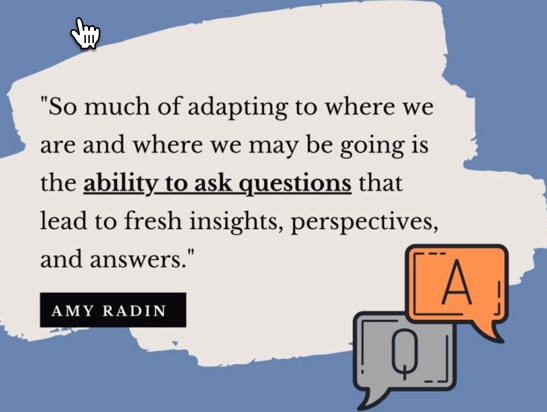8 Tactics to Make Questioning a Superpower

Learning & Development
62 week ago — 5 min read
No matter the path you choose, what I hear in conversations with friends, family and colleagues is a lot of reexamination and exploration, and of old assumptions being challenged, disproven, reshaped or even cast aside. New opportunities are opening up, borne out of challenges that will all demand innovation, and an ability not to get stuck in the past so much as learn and unlearn from it, and move forward with trust, open-mindedness, and curiosity.
Among the most vital tools for moving forward is a strengthened ability to ask questions. That’s why I was particularly struck by recent outreach from a participant in the Chief Product Officer Accelerator, where I am a mentor: a request for help on how to ask questions. They were worried about the risk of asking questions that would make them either look incompetent or create conflict with colleagues. I asked myself:
Why are we afraid to ask questions?
How can we encourage asking questions?
What if we asked questions as readily as we provide answers?
How can asking better questions help us, especially now?
Starting in our earliest school days, we are rewarded for raising our hands with the answer. Asking questions? With larger class sizes and the growing complexity of teachers’ roles, how many extra questions can be explored? By the time we join the workforce, we are well-trained to provide answers, a habit further reinforced by a focus on short-term thinking to get short-term results.

Great questions open up a group’s capacity to innovate because they:
- Draw people in
- Acknowledge the value of others’ contributions
- Can shift thinking and mindsets
- Create pathways to new insights, data and clues to the future
Here are eight tactics for developing a superpower-level ability to ask questions:
- Stay away from yes/no questions. They cut off conversation and paint a black-and-white picture where there are shades of grey.
- Begin questions with “How,” “What,” “Why,” or “What if” to get beyond the surface to the real substance of knowledge and insight.
- Replace “What would you do” with “What did you do?” Asking someone what they would do invites the answer that the person being asked thinks is desired. We have a hard time projecting to the future, so stick with questions that allow you to learn from others’ stories and real-life experiences.
- Ask follow-up questions, e.g., “Can you tell me more about that…” One of my favorite follow-ons, especially if I am trying to get to the truth and tamp down exaggerations.
- Probe past the surface, e.g., try “How did you figure that out” which is another useful, non-threatening way to peel back the proverbial onion.
- Get beyond the usual suspects. When considering whom to ask, broaden the targets, especially to include people who can offer an entirely fresh perspective.
- Be genuinely curious to convey a welcoming, accepting tone. The same question can evoke defensiveness or openness based upon tone and delivery. Expressing genuine curiosity starts with truly feeling curious, and will encourage people to open up and share.
- Quiet your mind and listen to the answer. Fight that tendency to jump to the answer. Be mindful, and focus only on what you are receiving back in response to your question.
To learn more, check out my video series, Make Questions Your Superpower.
Also read: Strategy: Now is not the time, but now is always the time
To explore business opportunities, link with me by clicking on the 'Connect' button on my eBiz Card.
Image source: shutterstock.com
Disclaimer: The views and opinions expressed in this article are those of the author and do not necessarily reflect the views, official policy or position of GlobalLinker.
Most read this week












Comments
Share this content
Please login or Register to join the discussion